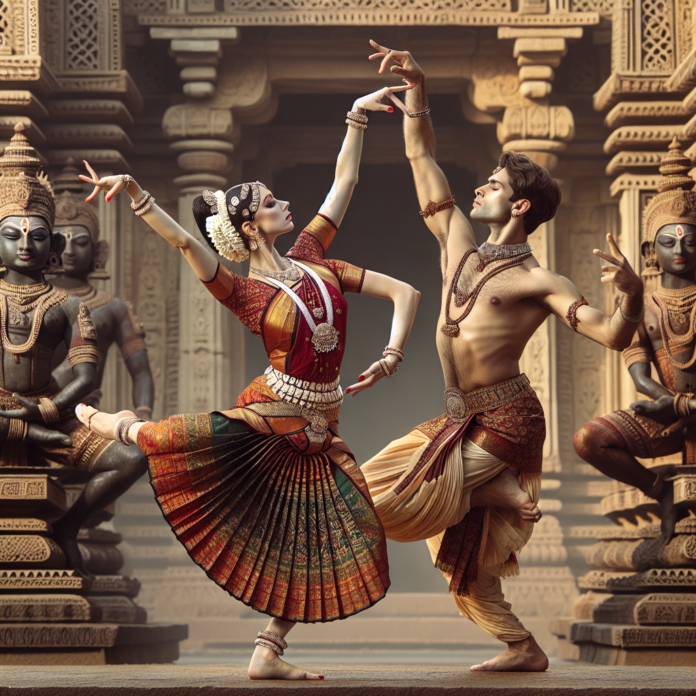Classical Dance: Bharatanatyam – The Elegance and Beauty of Bharatanatyam
India has an extensive cultural heritage which includes many art forms. Classical dance is one of them. Bharatanatyam – a classical dance from the state of Tamil Nadu in southern India – is one of the most complex and oldest dance forms. Bharatanatyam has its roots in the ancient texts Natya Shastra & Abhinaya darpana. It is not only a dance, but also a way to tell stories that includes music, rhythm, grace, expression & expression.
As part of the syllabus for the UPSC examination, there is a section about Indian culture. It is therefore important that aspirants have a basic knowledge of classical dances like Bharatanatyam. Understanding the significance and history of Bharatanatyam can give you a better understanding of the rich and diverse culture of India.
Bharatanatyam has a graceful posture, crisp head movements, and expressive hand gestures. Dance form combines nritya, pure dance and abstract dance. It is a form of art that is pleasing to the eye and soul. Bharatanatyam choreographs each movement to express a specific emotion or story. This is a visual treat.
Bharatanatyam repertoire is a mixture of traditional margams (repertoires) and modern interpretations. The dance usually starts with an invocation, or alarippu, followed by items such as jatiswaram (varnam), padams (padams), and tillana. Each piece has a unique melody, rhythm, and theme that allows the dancers to show off their artistic prowess.
Abhinaya is a key aspect of Bharatanatyam, the art of expression. Dancers can express emotions such as love, anger and joy through facial expressions, body movements and hand gestures. The abhinaya dances bring to life stories from Indian literature, folklore and mythology.
Bharatanatyam is not only beautiful, but also spiritual and devotional. Bharatanatyam has many compositions that are dedicated to Hindu Gods and Goddesses. Dancers take on the roles of Lord Shiva and Lord Krishna. Dancers create a meditative and serene atmosphere through their performances by invoking a sense bhakti, or devotion, and surrendering to a higher power.
Bharatanatyam can only be learned through years of dedication and practice under the guidance of an experienced guru. Dance schools and workshops run by renowned institutions or dancers are available for those who want to learn more about the art. Bharatanatyam is a great way to learn about Indian culture and develop discipline, focus and creativity.
Bharatanatyam, in conclusion, is an enchanting and timeless art form that represents the grace, beauty, and elegance of Indian classical dancing. By learning about this rich tradition, aspirants will gain a better understanding of India’s cultural diversity and artistic brilliance. It can be an important part of UPSC exam preparation. Let us continue to preserve this ancient art for future generations by celebrating the legacy of Bharatanatyam.
